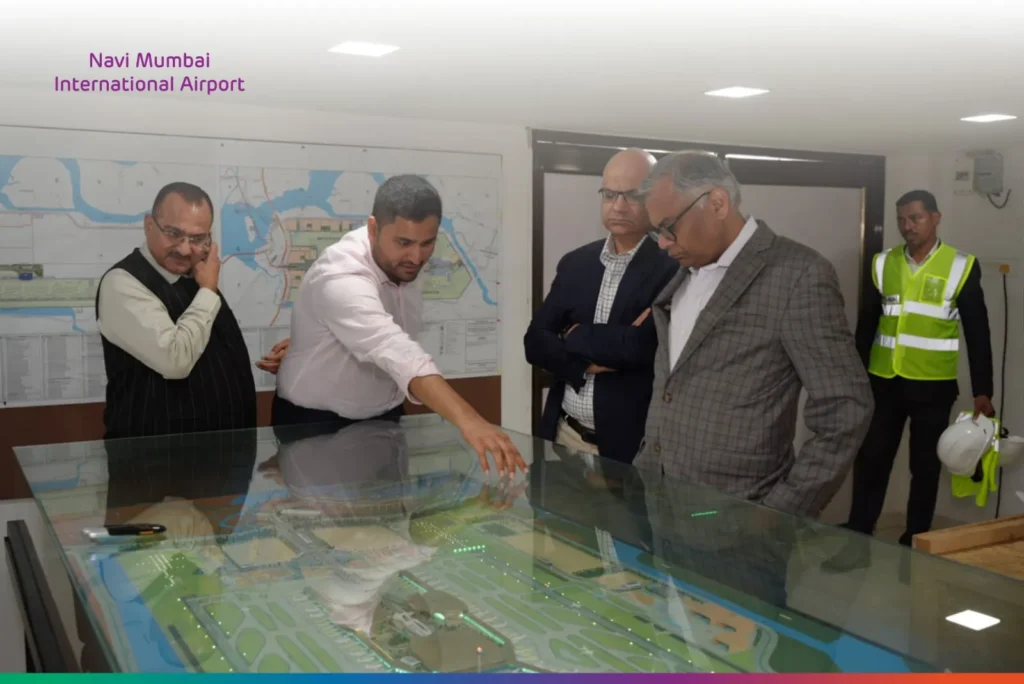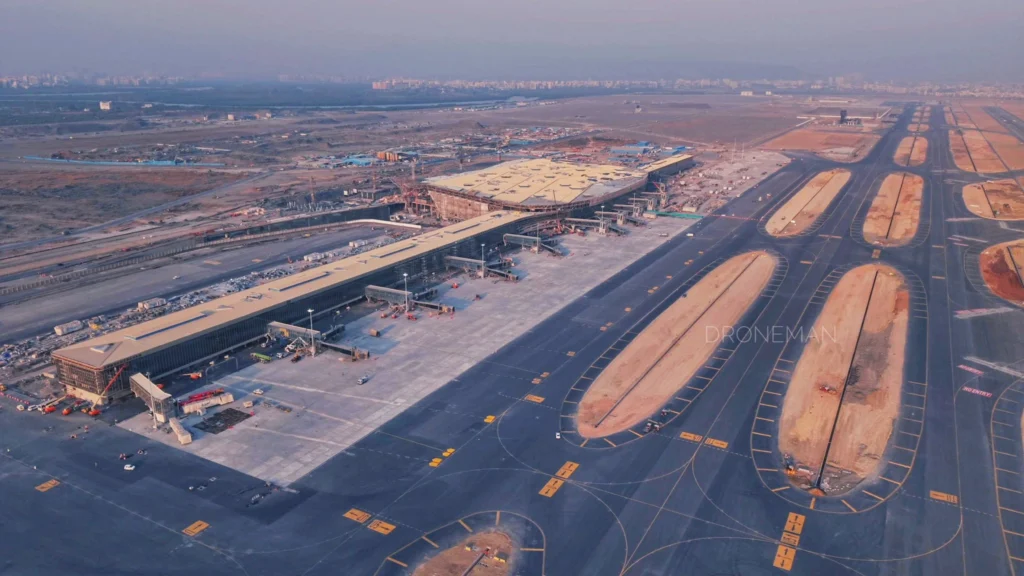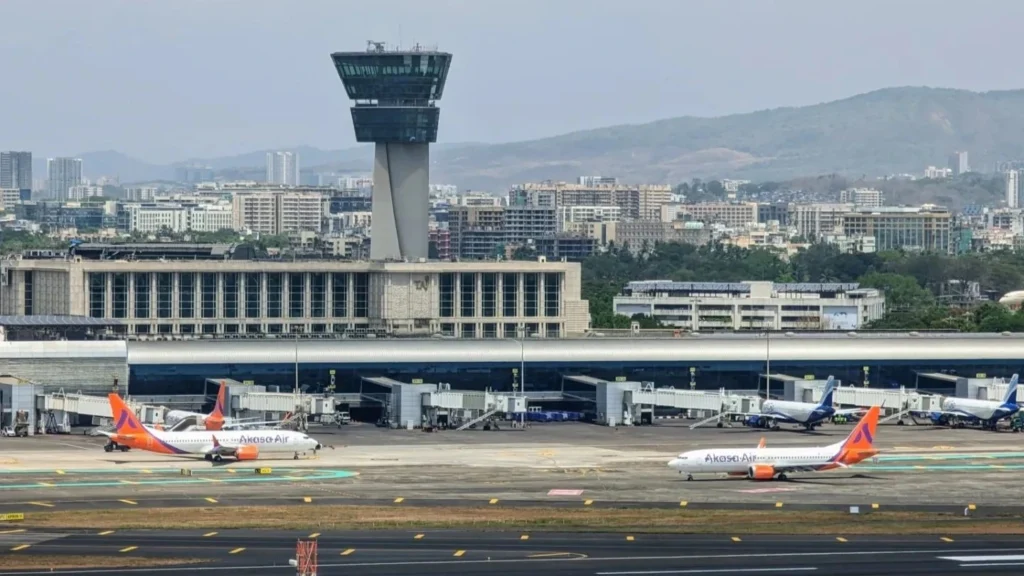MUMBAI- Navi Mumbai International Airport (NMI) prepares to advance its expansion timeline as officials announce the commencement of the second phase pre-development activities beginning in October.
Chief Executive Officer BVJK Sharma confirmed Wednesday that preparatory works for the additional terminal and runway construction will initiate despite the first phase remaining without a finalised launch date.

Navi Mumbai Airport Operations
The airport’s inaugural phase targets an August-end opening, though authorities have not established a specific launch date.
Airport management expects initial operations to commence with limited capacity while infrastructure scaling continues throughout the following months.
IndiGo (6E) and Akasa Air (QP) have completed their operational planning announcements for the new facility.
Airport officials currently engage in ongoing discussions with Air India (AI) to finalise the carrier’s network strategy for Navi Mumbai operations.

Traffic Movement Capacity
Sharma outlined the airport’s traffic movement strategy during his remarks at the Inter Passenger Terminal Show.
Initial operations will accommodate 8-10 air traffic movements per hour upon opening. Airport management plans to increase capacity to 30 movements per hour by April of the following year.
The single runway infrastructure possesses the technical capability to handle 45 flights per hour. However, terminal size limitations will constrain actual operational capacity, prompting the Adani Group to accelerate second-phase construction timelines.

Initial Capacity
The launch phase configuration will provide capacity for 20 million passengers annually. The second terminal and additional runway construction will expand annual passenger handling capacity by thirty to thirty-five million passengers upon completion.
Airport developers scheduled preparatory activities, including excavation and comprehensive soil testing, to begin in October. Management has prepared a master plan for the expansion, though officials acknowledge potential modifications based on airline expansion requirements and operational demands.
The second terminal architect selection will proceed through a competitive design process. This approach ensures the facility meets both functional requirements and aesthetic standards appropriate for a major international gateway.
Construction teams expect to complete both the second terminal and the additional runway by 2029. The extended timeline allows for comprehensive planning and quality construction standards while maintaining operational continuity.

Modular Construction Approach
Sharma emphasised the adoption of modular construction methodologies to prevent disruption of existing flight operations. This approach allows continuous airport functionality while expansion activities proceed simultaneously across the facility.
The construction strategy prioritises operational continuity as passenger volumes increase and airline partnerships expand. Modular development phases enable responsive capacity additions based on actual demand patterns and carrier requirements.
Digital Solutions
Airport management focuses on passenger experience optimisation through technology integration. The facility will implement Digi Yatra systems and the Adani One application to streamline passenger journeys and reduce processing times.
The Adani One app will provide real-time information, including walking distances to boarding gates and estimated boarding wait times. These digital solutions aim to eliminate passenger uncertainty and improve overall travel satisfaction.

Advanced Security
Airport officials engage in active discussions with the Civil Aviation Ministry and the Bureau of Civil Aviation Security (BCAS) regarding advanced security equipment. The proposed systems include body scanners and CT x-ray machines that would enhance security efficiency.
The new CT x-ray technology allows passengers to retain electronic devices and laptops within cabin baggage during security screening processes. This advancement would significantly reduce security checkpoint processing times while maintaining rigorous safety standards.

Development Timeline
The accelerated second phase development timeline responds to anticipated regional aviation demand growth. Navi Mumbai’s position as an alternative to Mumbai’s congested Chhatrapati Shivaji Maharaj International Airport (BOM) creates a significant market opportunity for the new facility.
Airport authorities expect the facility to serve as a crucial component in Maharashtra’s aviation infrastructure network, providing enhanced connectivity options for both domestic and international travellers seeking alternatives to Mumbai’s primary airport facility.
Stay tuned with us. Further, follow us on social media for the latest updates.
Join us on Telegram Group for the Latest Aviation Updates. Subsequently, follow us on Google News

